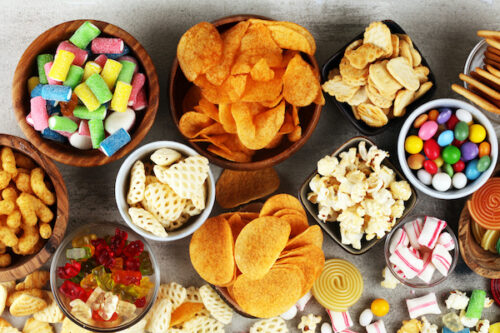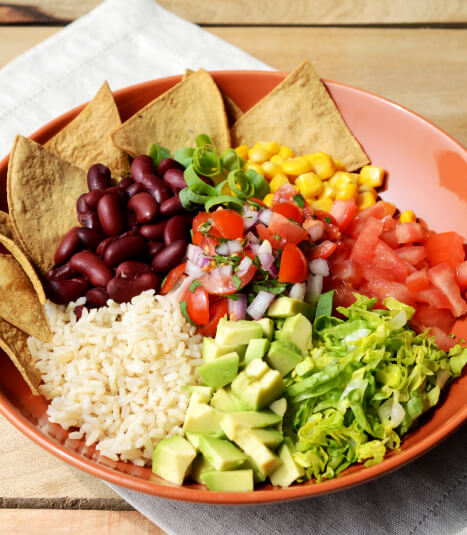The South Beach Diet
Updated September 18, 2013
By Arthur Agatston, MD
The same old low-carbohydrate diet fools the gullible consumer again
The New York Times #1 best seller is now the South Beach Diet – this is a small step in the right direction away from the hazardous Atkins Diet – which means on this diet you are closing your arteries and losing your bones at a slower rate. But like all similar diets – both the low-carbohydrate and the calorie-restricted diets – you will likely regain all your lost weight before the year is out. What continues to amaze me is that desperate people continue to buy the same low-carbohydrate and/or food-restricted diets simply repackaged in a new best-selling diet book.
The secret to the success of this diet is you will be eating only the “good” carbohydrates and fats, and avoiding the “bad” ones, according to Dr. Agatston. The diet is supposed to cause permanent weight loss, stop cravings, and improve the cardiovascular system. You don’t even have to exercise daily.
The truth is this is a combination of the Atkins diet (phase one) followed by a high-fat, high-protein, semi-starvation diet, like the Zone or Sugar Busters diets (phase two). The text tells the reader, “Our diet is distinguished by the absence of calorie counts; percentage of fats, carbs, and protein; or even portion control” – essentially, “Don’t even think about limiting the amount you eat.” However, the menu plans say otherwise – you are severely restricted in your choice of foods in phase one and in the kinds and amounts of foods in phase two in order to lose. If you start to gain weight in phase two or three, the solution is to return to the tried and true very low-carbohydrate, high-protein phase one of the diet. This is the only portion of the diet that has any chance of working at least temporarily – and also the unhealthiest phase of the diet. The foods served are the very ones condemned by heart associations and cancer societies worldwide as causing the deadly and debilitating diseases – like heart attacks, cancer, diabetes, and arthritis – among people living in affluent nations.
The first phase, lasting 2 weeks, is to “change yourself internally,” to stop the physical cravings that rule your eating habits, according to Dr. Agatston. Actually, the effects will be those expected from any low-carbohydrate, high-protein, high-fat (Atkins-type) diet. Following the recipes results in a diet that contains about 50% of the calories from protein (range of 30% to 80%), and about 40% fat; leaving about 10% for carbohydrate. Even the desserts are high in protein (30%) and fat (50%). In actuality, the diet may turn out to be even lower in carbohydrate and dietary fiber because many people fail to eat the green and yellow vegetables allowed – rather focusing on the steak, chicken, and fish portions, containing no carbohydrate or fiber.
Dr. Agatston promises 8 to 13 pounds of weight loss during the first 2 weeks. Why not? – All similar diets accomplish this goal. The lost weight is mostly water, glycogen (stored sugar), and at most 4 pounds of fat the first 2 weeks. Some of the water loss is due to the diuretic effects of all that protein; the remainder of the water is lost while using up stores of sugar mixed with water, known as glycogen.* Although the first phase of the diet does not insist on a state of ketosis (a condition of almost total carbohydrate starvation) for success, like the Atkins diet does, there is a good chance that many followers will restrict their intake of carbohydrate sufficiently to go into this metabolic state – causing even greater water loss, along with suppression of their appetites. Losing that much water weight is a great incentive for believing in the powers of this book and going on to the next phase.
*The body requires glucose (sugar) for certain cells like red blood cells and kidney cells, and the brain prefers glucose. When insufficient amounts of carbohydrate (sugar) are in the diet, the body relies upon its stores, glycogen, found mostly in the muscles and liver. About 2 pounds of sugar are mixed with 4 pounds of water – both are released when glycogen is burned for fuel to nourish these vital tissues during this self-imposed period of deprivation.
The second phase of the diet works by restricting calories, primarily by restricting some of the more usual junk people eat, like highly refined flours and sugars; and their famous combinations – mixed with fat – like cookies, cakes, pies, candy bars, and donuts. The meal plans also restricts calories by using typical “portion control” methods, allowing “1 poached egg,” “¾ cup cottage cheese,” “4 whole wheat crackers,” “1 whole English muffin,” “…counting out 15 almonds or cashews…” etc. If phase two fails then the dieter is to return to phase one.
Phase three is essentially anything you want to eat, but hopefully some of the eating habits from phase one and two have stuck. If phase three fails then the dieter is to return to phase one.
Brief Summary of the South Beach Diet
Phase 1 – First 2 weeks (basically a low-carbohydrate, high-protein, high-fat (Atkins-type) diet. You can follow it longer if you choose for faster weight loss after 2 weeks.
Allowed: meat, poultry, fish, eggs, cheese, and vegetables with liberal use of olive oil. Forbidden: Bread, rice, potatoes, pasta, baked goods, fruit, alcohol (including beer and wine).
Fed as three “balanced” meals
Promise: 8-13 pounds of weight loss
Phase 2 – Followed until you hit your target weight. Allowed: Add back the foods you love, like the “good” carbohydrates – fruit, whole grain bread, whole grain rice, whole wheat pasta, and sweet potatoes (no white potatoes). Meals are still high in fat, protein, and cholesterol.
Promise: 1-2 pounds lost/week
If phase 2 fails, you then return to phase 1 to get back on track.
Phase 3 – for the rest of your life. There is no allowed or forbidden foods list for phase 3 – you can eat whatever you want. If phase 3 fails, you then return to phase 1 to get back on track.
High Protein Diets Are a Health Hazard
In common with almost all successful diet books, this one tells you “good news about your bad habits.” You can still eat all the steak, chicken, eggs, and Canadian bacon you desire, and on occasion, chocolate cake. Believe it or not, these are recommendations from a cardiologist. The fact that the author himself takes statin drugs to lower his cholesterol (like Mevacor, Lipitor, Zocor, etc.), fish oil, and aspirin to prevent a heart attack – penance for all that sinful food? – makes me believe he clearly understands the life-threatening effects of what he is doing. Every cardiologist knows this, and you would think Dr. Agatston’s fellow cardiologists knew all about The South Beach Diet when they wrote their report on high protein diets two years before the book’s publication.
According to the Nutrition Committee of the American Heart Association (AHA) report in the October 9, 2001 issue of the journal Circulation,1 high protein diets are hazardous to your health and are ineffective. They wrote, “High-protein diets typically offer wide latitude in protein food choices, are restrictive in other food choices (mainly carbohydrates), and provide structured eating plans. They also often promote misconceptions about carbohydrates, insulin resistance, ketosis, and fat burning as mechanisms of action for weight loss … These diets are generally associated with higher intakes of total fat, saturated fat, and cholesterol because the protein is provided mainly by animal sources. In high-protein diets, weight loss is initially high due to fluid loss related to reduced carbohydrate intake, overall caloric restriction, and ketosis-induced appetite suppression. Beneficial effects on blood lipids and insulin resistance are due to the weight loss, not to the change in caloric composition … High-protein diets are not recommended because they restrict healthful foods that provide essential nutrients and do not provide the variety of foods needed to adequately meet nutritional needs. Individuals who follow these diets are therefore at risk for compromised vitamin and mineral intake, as well as potential cardiac, renal, bone, and liver abnormalities overall.”…”High-protein diets may also be associated with increased risk for coronary heart disease due to intakes of saturated fat, cholesterol, and other associated dietary factors.”
Hopefully you have learned that the only eating plan that results in permanent weight control, natural relief of hunger, and great health is the one that was designed through millions of years of evolution – a diet of starches, vegetables and fruits (See my July 2003 newsletter). This is confirmed by the fact that an ongoing study (the National Weight Loss Registry) of successful dieters with an average weight loss of 60 pounds, maintained for more than 5 years, found nearly all of these people follow a low-fat diet and exercise.2 Unfortunately, only a few people learn the truth – the masses wait for the next best-selling diet book to regurgitate the same old nonsense to them, and that’s why they continue to fail and remain fat.
References
- St. Jeor, S. Dietary protein and weight reduction: a statement for healthcare professionals from the Nutrition Committee of the Council on Nutrition, Physical Activity, and Metabolism of the American Heart Association. Circulation 2001 Oct 9;104(15):1869-74.
- Wing R. Successful weight loss maintenance. Annu Rev Nutr. 2001;21:323-41.
Recommended Articles

Salt Sugar Fat: How the Food Giants Hooked Us

The Ultimate Heart Disease Prevention Plan







